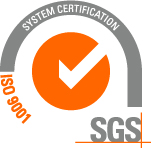The Mobility Centre oversees the processes of data acquisition, maintenance and automatic sanctioning, monitors in real time the state of mobility as a whole, coordinating with different establishments, institutional and non-institutional, and provides the dissemination of information to users, through direct channels available. The working time is guaranteed from 7 a.m. to 8 p.m., every day of the year.
The Mobility Centre has an open, modular and expandable structure, based on two levels of control: a centralized supervisor and some systems operating at the top level with a distributed intelligence logic in the peripheral devices. The ITS (Intelligent Transport System) systems, operating at the top level, support the urban traffic regulation and contribute to a greater efficiency and sustainability of the vehicles and people’s circulation.
The Central publishes information on various message panels and electronic palines, improves the news section on the app and on the mobile muoversiararoma.it website, directly places alerts about events and road closures within the Waze platform. Finally, it oversees the data flow from public transport operators (as Atac e RomaTpl) aimed at the non-stop-updating of the bus arrival forecasts, at the bus stops. The dissemination of information mentioned above, are based on the continuous monitoring of the system, through the network of sensors installed on the territory and the cooperation with other institutional actors responsible for carrying out activities with direct impacts on mobility: the video surveillance system, the measuring stations and the travel time monitoring system are some examples of the aforementioned network of traditional sensors.
Among the technological systems, directly in charge of the Mobility Centre, there are about 1,500 traffic lights. The Centre, during its working time, carries out fault reporting activities and monitoring maintenance activities, through a dedicated telephone line, mainly used by Local Police officers. The Mobility Centre tasks are completed by the management of automatic sanctioning systems, such as: many ZTL gates, gates to protect fast lanes, speed cameras and red passage sanctioning systems.
The role of technology is fundamental to all the activities that Roma Servizi per la Mobilità performs for the control, monitoring and regulation of vehicle traffic and more generally to the city's mobility planning activity aimed at increasing accessibility to collective transport services and at improving efficiency and sustainability in private mobility.
At the technological heart of these activities is the Mobility Centre, an integrated telematics system of Intelligent Transport System (ITS) technologies that provide data and information for a flexible and integrated mobility government and that provide real-time and programmed information tools for citizens, commuters and tourists.
The development of the ITS system in Rome, has equipped the city with: a system of variable message panels along the main road arteries, a network of video surveillance cameras, measuring stations for the detection of traffic flows, centralised traffic lights, electronic gates for control and sanctioning, gates for the ZTL areas and fast lanes access, tools for detecting the passage with the red light, travel times monitoring and exceeding average speed limits on routes.
The Mobility Centre, also cooperating with the operators working in operating-rooms of other institutions along the territory, can manage both scheduled events, that impact on mobility such as roadworks, and extraordinary events. Equally strategic is the role that these technologies play in information activities to the citizen, with both the communication tools- managed directly by the company- and through the open data made available to developers and web masters.

